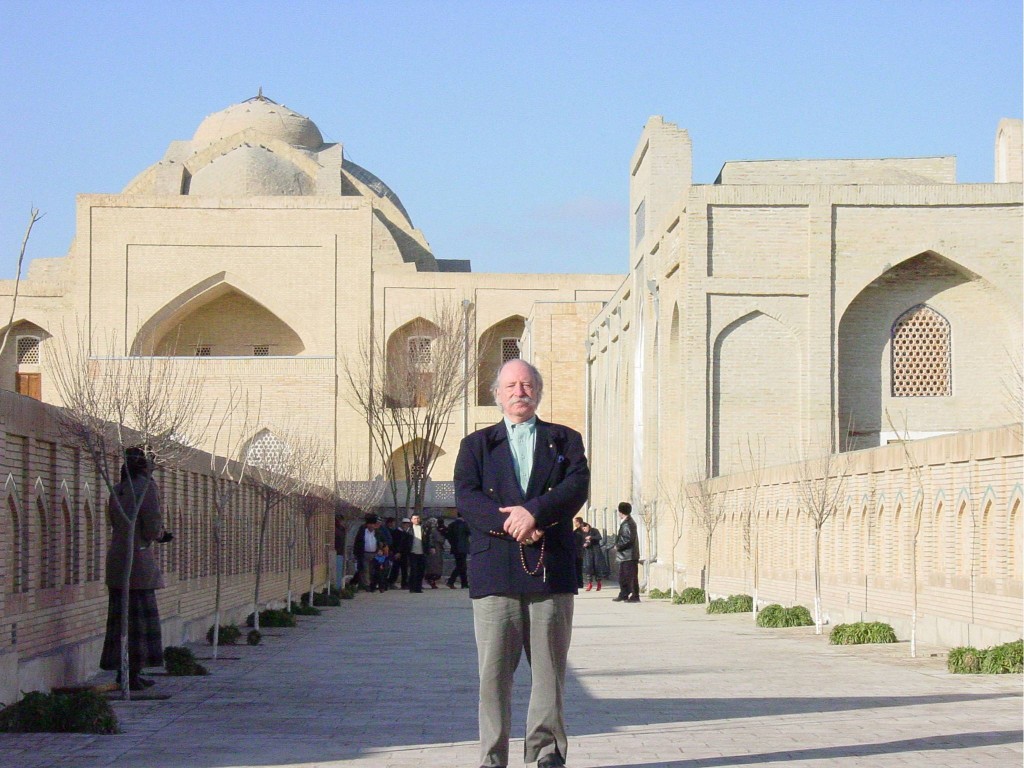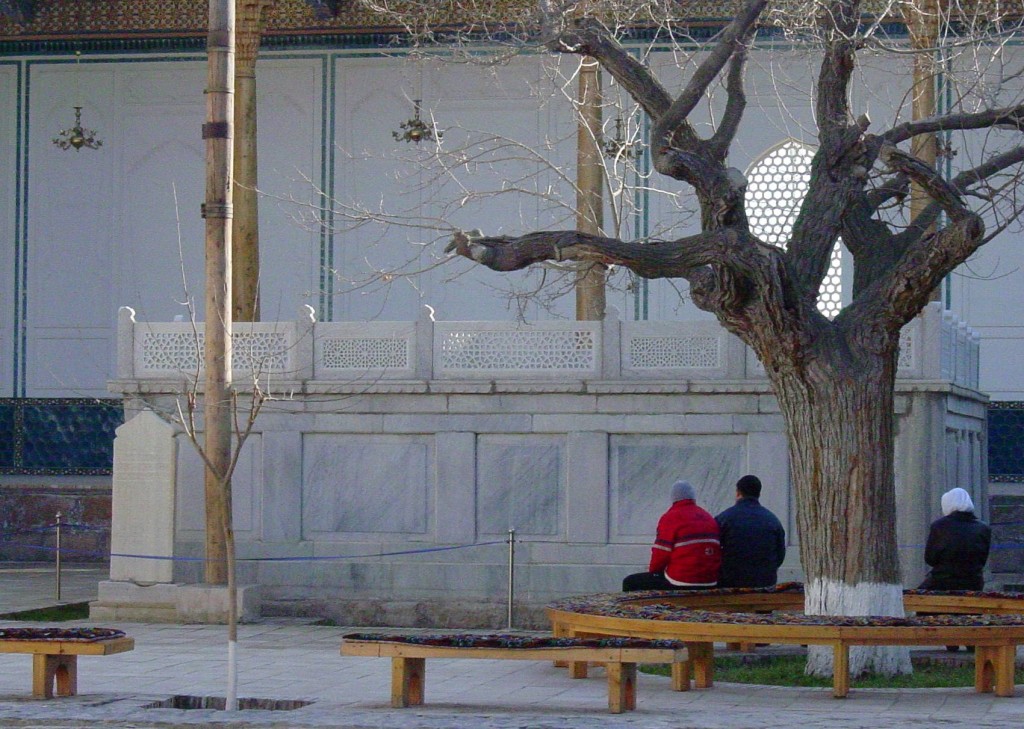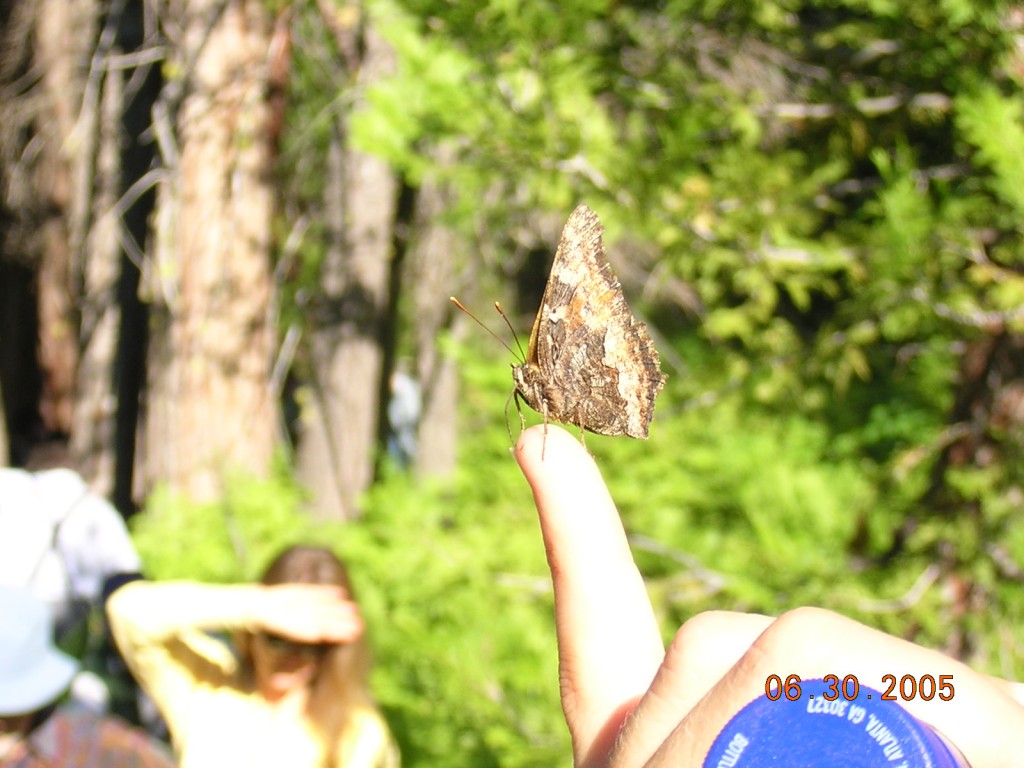Noor Inayat Khan
The Princess Who Became a Spy
She was a Sufi pacifist who fought for Britain and died at the hands of the Gestapo. As a new biography separates truth from myth, Boyd Tonkin celebrates the remarkable Noor Inayat Khan. Published: 20 February 2006, Sutton Publishing
This is the story of a young Indian Muslim woman who joined a secret organization dedicated to acts of sabotage, subversion and terrorism across Europe. A fierce critic of British imperialism, she worked with passion and audacity to damage and disrupt the forces of law and order. Captured, she proved impenitent and uncontrollable. She died a horrific death in custody. And now, perhaps, is the right time to revisit the life of Princess Noor-un-nisa Inayat Khan, George Cross, Croix de Guerre with gold star, MBE: the British secret agent who was kicked into a “bloody mess” on the stone floors of Dachau concentration camp through the night of 13 September 1944, and then shot with the word “Liberté” on her lips. Hers, after all, is a remarkable chapter in the history of Muslims in Britain and the West.
For more than half a century, myths, misconceptions and outright fantasies have crowded around the memory of Noor Inayat Khan. She was the first female radio operator sent into Nazi-occupied France by the Special Operations Executive (SOE). Through the frantic, terrifying summer of 1943, the untried 29-year-old spy found herself virtually in charge of Resistance communications in the Paris area as the Gestapo arrested cell after cell around her. The daughter of a famous Sufi mystic and musician, and an Indianised American mother, she was remembered by all as a “dreamy”, sensitive child. Yet Noor the spy became a tigress whose bravery and defiance startled – and outraged – her German jailers and torturers. A few responded differently. When told during his postwar interrogation about her death in Dachau, Hans Josef Kieffer – head of the Gestapo headquarters in Paris – apparently broke down in tears.
Controversies and rumors still abound. Noor’s posthumous career as a war heroine began in earnest in 1952, when her friend and comrade Jean Overton Fuller did her best to dispel the fog of confusion and misinformation left by her death in a book, Madeleine – Noor’s Resistance codename. Maurice Buckmaster, Noor’s colonel in SOE, and the top cryptographer Leo Marks both recalled her in their memoirs with an intense, possessive – but rather patronizing – affection that often makes for more heat than light. Marks, briefed to expect as his latest apprentice a “potty princess”, typically begins his recollections of their first encounter by writing that “no one had mentioned Noor’s extraordinary beauty”.
>From her spellbound SOE trainers at Beaulieu Manor to the governor of Pforzheim jail who came almost to revere the prisoner he kept in chains, Noor left no one unmoved. Yet her quiet charisma made fancy corrupt fact. In recent years, two colorful novels have embroidered her tale with the interests and penchants of their authors: the French writer Laurent Joffrin’s frankly romanticized All That I Have, and Shauna Singh Baldwin’s more politically engaged The Tiger Claw.
However, the recent declassification of personal files has allowed the always-murky deeds of SOE and its “F Section” agents who spied (and died) in France to emerge further into the light of history. Fresh material surfaced when, last year, Sarah Helm’s A Life in Secrets traced the biography of Vera Atkins: the SOE staff officer who, plagued by remorse at the hideous fate of so many of her F Section “girls”, made a secret postwar enquiry into their betrayal and capture. Now, Shrabani Basu – a historian and journalist based in London as correspondent for an Indian newspaper group – has pieced together Noor’s story more fully and reliably than ever before in a new biography, Spy Princess.
For Basu, “60 years after the war, Noor’s vision and courage are inspirational”. She has proposed to English Heritage that a blue plaque should mark Noor’s address at 4 Taviton Street in Bloomsbury, and a decision will be made in June. Thanks to her book, a new generation can grasp what Noor did, and how she did it, with much greater clarity. Yet the “why” remains, in some sense, as elusive as ever.
Noor Inayat Khan was the great-great-great granddaughter of Tipu Sultan, the Muslim ruler of Mysore whose celebrated military prowess stalled the advance of East India Company forces at the end of the 18th century. Ever after, the British in India treated the family with the utmost suspicion. Yet Hazrat, her father, turned his back on this rebel and warrior tradition when he became a Sufi teacher and founded an order to spread – via music – his peaceful, tolerant and non-dogmatic faith to the world. A gifted singer and instrumentalist from a family of virtuosi, he met his American wife on tour in California. By the time Noor was born, in January 1914, the Inayat Khans were living and performing in Moscow, and her mother, the former Ora Ray Baker, had donned sari and veil as “Amina Begum”.
After an infancy in the chilly wartime squares of Bloomsbury, Noor grew up in the suburbs of Paris, at “Fazal Manzil”: a much-loved house in Suresnes outside which a military band still plays in her honor every 14 July. The eldest child of four, seen by all as kind, vague and artistic, she suddenly had to take charge of the family when her father’s death on a visit to India in 1927 left her mother immobilized by grief. For the first, but not the last, time, crisis turned Noor the dreamer into Noor the leader.
In the 1930s, Noor studied music (especially the harp) at the Paris conservatory, and child psychology at the Sorbonne. She also became a talented writer and broadcaster of children’s stories. On Amazon you can find Noor’s Twenty Jataka Tales (1939): charming Buddhist fables in which, eerily, animals overcome their fragility to perform feats of bravery and sacrifice. At this time, she got engaged to a pianist of Jewish origin, one aspect – together with rumors of a later, wartime engagement to a fellow British officer – of a still-mysterious emotional life.
After Germany invaded France in June 1940, Noor the Muslim Sufi pacifist – and passionate believer in India’s right to independence from colonial rule – made the moral choice that fixed the course of her life, and death. She and her brother Vilayat decided, in the face of Nazi aggression, that non-violence was not enough. They jointly vowed that they would work – as Vilayat told Shrabani Basu in 2003 – “to thwart the aggression of the tyrant”.
Surviving the chaos of the mass flight from Paris to Bordeaux, they made a dramatic seaborne escape to England. There, Noor volunteered for the WAAF (Women’s Auxiliary Air Force) and started on the long road of signals and wireless training that would lead her – a woman raised in France, perfectly bilingual, and with advanced radio skills – to recruitment as a secret agent in November 1942. Selwyn Jepson, the novelist-turned-spy who first interviewed her for SOE, later found himself remembering Noor with a “very personal vividness… the small, still features, the dark quiet eyes, the soft voice, and the fine spirit glowing in her”. No one ever forgot Noor, or ever felt indifferent about her, though some SOE trainers doubted her suitability for espionage and tried to block her progress into the field.
They failed, and within days of her arrival in France in June 1943 she had proved them wrong. As the broken Prosper network of Resistance cells collapsed, Noor dodged from safe house to safe house in Paris, outwitting the Gestapo and transmitting messages with immense speed and accuracy in hostile conditions. “Single-handedly,” according to Basu, “she did the work of six radio operators.” In London, code-master Leo Marks noted that “her transmissions were flawless, with all their security checks intact”.
With F Section still in disarray, but starting to rebuild thanks to her work, Noor was finally betrayed in October – probably by Renée Garry, sister of her first contact in Paris. Within minutes of being taken to the Gestapo HQ at 84 avenue Foch, she had climbed onto a bathroom window ledge in an escape attempt. Forced by the Germans to keep up radio transmissions (the “radio game” inflicted on captured agents), Noor duly sent the agreed 18-letter signal to alert SOE about her capture. It was ignored: one of a catalogue of SOE blunders. Later in her interrogation, she joined with other agents to plan another daring escape that involved loosening, and then removing, the bars on their windows. It almost succeeded – ironically, a simultaneous RAF air raid on Paris prompted a sudden security check.
Now viewed as incorrigibly dangerous and uncooperative, Noor was sent in November 1942 to Pforzheim prison in Germany, where – bound by three chains, in solitary confinement – she endured 10 months of medieval abuse. She ranked as a Nacht und Nebel (“Night and Fog”) inmate, earmarked only for oblivion and death. Shackled, starved, beaten, she never talked. Then, in September 1944, came the transfer to Dachau along with three other female agents, and the end of her sufferings.
Knowing the whole truth – or almost the whole truth – about Noor does not make her any less paradoxical. Basu, who quashes so many myths about this “Muslim woman of Indian origin who made the highest sacrifice for Britain”, also stresses that she fervently backed the struggle for Indian liberty. Indeed, Noor shocked – and maybe rather impressed – the interview panel when she went for an WAAF commission in 1942 by arguing that, after the war, she might feel obliged to fight the British in India. That makes her – although a commissioned British officer, and a holder of the George Cross – a curious national heroine. As for her Muslim identity, the Inayat Khans’ brand of all-inclusive Sufism would count as heresy or worse to the kind of hardliner who now presumes to speak for Islam in and to the West.
The key to her career may be that this child of a liberal, cultured home freely chose her fate. She chose to fight Nazism; she chose to do it alongside the British; she chose the risks of espionage; and she chose to stay in Paris when SOE ordered her home. At a memorial service in Paris, General de Gaulle’s niece summed up her achievement: “Nothing, neither her nationality, nor the traditions of her family, none of these obliged her to take her position in the war. However, she chose it. It is our fight that she chose, that she pursued with an admirable, an invincible courage.” When she died with “freedom” on her lips, it was hers. And it was ours as well.
Shrabani Basu’s ‘Spy Princess: the life of Noor Inayat Khan’ is published by Sutton Publishing (£18.99). She will be talking with Ian Jack and MRD Foot at the Nehru Centre, Indian High Commission, 8 South Audley Street, London W1, on 1 March commissioned British officer, and a holder of the George Cross – a curious national heroine. As for her Muslim identity, the Inayat Khans’ brand of all-inclusive Sufism would count as heresy or worse to the kind of hardliner who now presumes to speak for Islam in and to the West.



